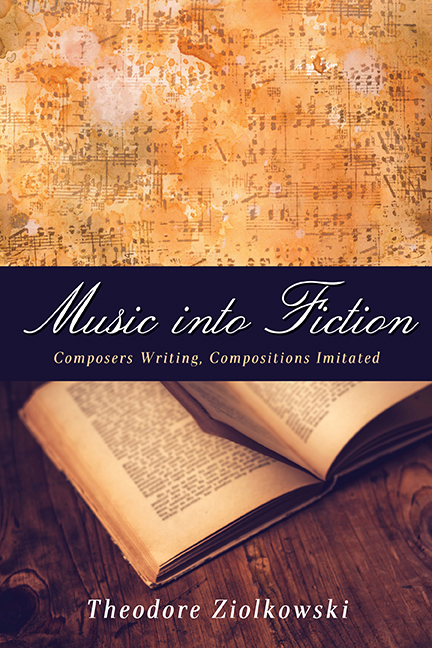6 - Compositional Forms
from Second Movement: Compositions Imitated
Published online by Cambridge University Press: 09 May 2017
Summary
The Musicalization of Fiction
The musicalization of fiction” (349) is the term with which Aldous Huxley—or, more precisely, Philip Quarles, one of the figures in his novel—characterizes the style of Point Counter Point (1928). Huxley, himself a competent pianist, demonstrated his understanding of the history and theory of music from Palestrina to Delius and Stravinsky in some sixty reviews from February 1922 until June 1923, as music critic for the Weekly Westminster Gazette. An early scene in Point Counter Point depicts a musical evening where Bach's Suite No. 2 in B minor for flute and strings is being performed, offering the author an opportunity to reflect on the nature of the fugue (27–28). The novel closes with a lengthy meditation on Beethoven's Quartet in A minor (op. 132), whose “archaic Lydian harmonies” (508) provide proof, for at least one of the characters, Spandrell, that “God existed” (507).
We understand, then, that Huxley knows exactly what he's talking about when he speaks of “the musicalization of fiction”: “not in the symbolist way, by subordinating sense to sound”—or what we know as verbal music—“but on a large scale, in the construction” (349–50). It is clearly the technique of counterpoint, as announced in his title, that he has in mind: “abrupt transitions,” “majesty alternating with a joke,” “comedy hinting at prodigious and tragic solemnities.” This is precisely what Huxley accomplishes in his brilliant survey of the social, moral, intellectual, and cultural life of the 1920s. “All you need is a sufficiency of characters and parallel, contrapuntal plots.” Philip Quarles, from whose notebook these ruminations are taken, earlier expressed essentially the same idea to his wife in somewhat different terms: “The essence of the new way of looking is multiplicity…. What I want to do is to look with all those eyes at once. With religious eyes, scientific eyes, economic eyes, homme moyen sensuel eyes” (228).
- Type
- Chapter
- Information
- Music into FictionComposers Writing, Compositions Imitated, pp. 133 - 172Publisher: Boydell & BrewerPrint publication year: 2017



